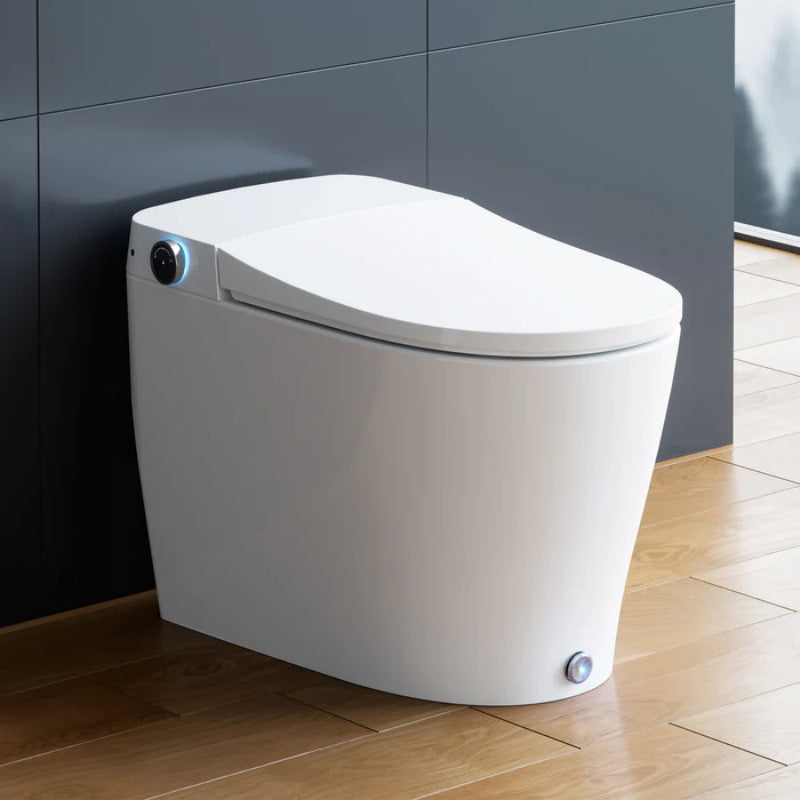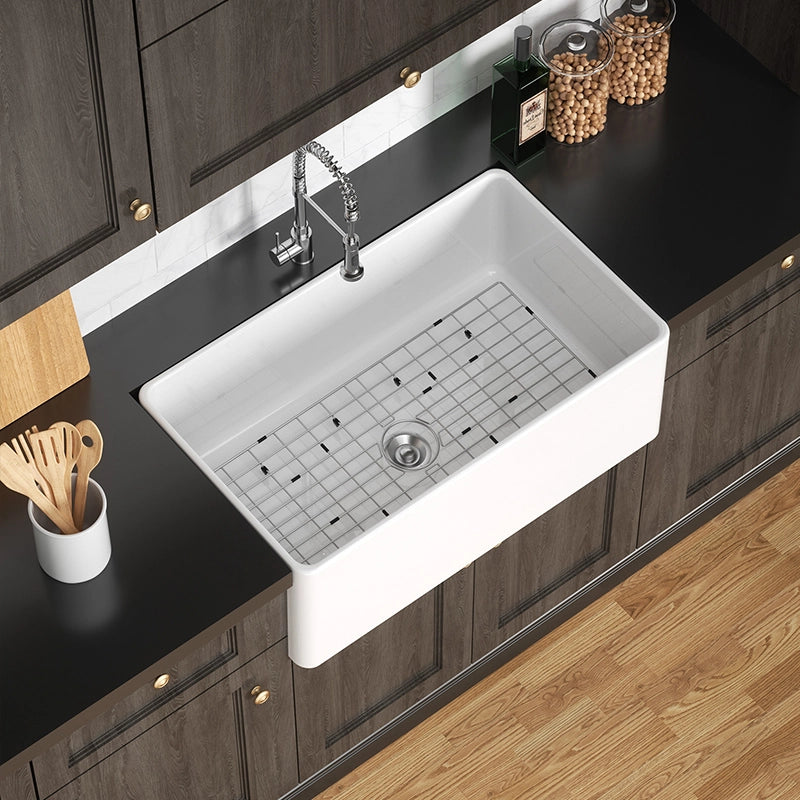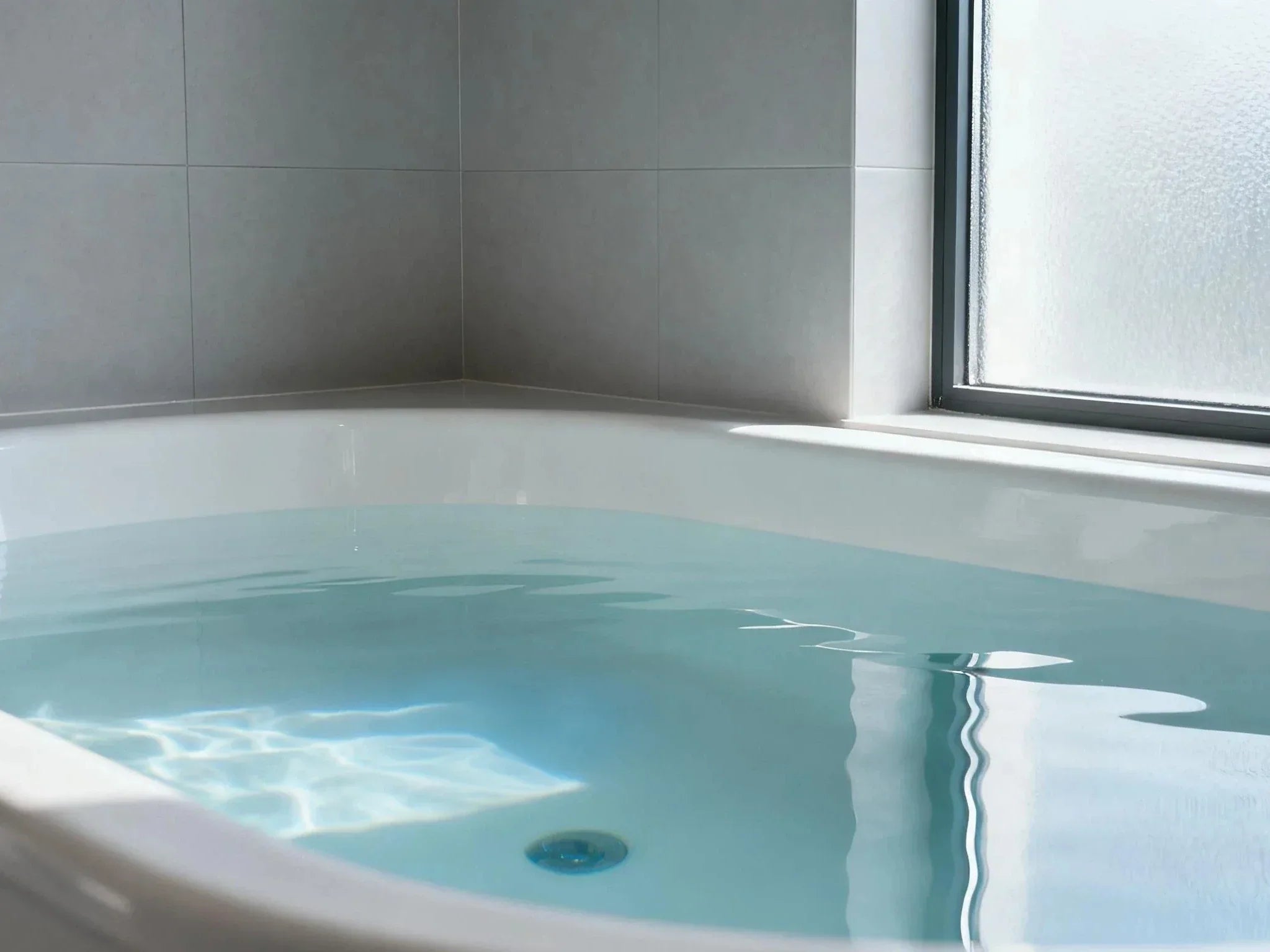Undermount vs drop in sink is one of the most-talked-about choices when you plan a kitchen or bath refresh. It affects how hard the install is, how easy it is to clean, what countertops you can use, and what it will cost now and later. If you want the short answer: both work well, but they fit different needs. This guide starts with a quick verdict and a simple comparison of the difference between undermount and drop in sink styles. Then we go deeper into what is a drop in sink, what is undermount sink, and how to choose between an undermount or drop in sink. Whether you’re comparing drop in sink vs undermount options, we cover real-life use, installation details, countertop compatibility, hidden risks, budget and resale context, and a few health and environmental notes.
Undermount vs Drop In Sink: Quick Answer, Pros/Cons, Best Fit
Before diving into the details, here’s a quick look at the main pros and cons of each type of sink. This section helps you understand at a glance the difference between undermount and drop in sink options, so you can decide which fits your kitchen style, workflow, and budget.
Undermount vs drop-in sink: who should choose which
To put it simply, choose an undermount sink if you have a solid-surface countertop like granite, quartz, or solid surface, you want a smooth, modern look, and you prefer faster wipe-downs. Pick a drop-in sink (also called a top-mount or self-rimming sink) if you have laminate, wood, or tile counters, want an easier DIY install with lower upfront cost, and plan to swap the sink later without hiring a fabricator. Both can be durable and attractive when installed well. The difference between undermount and drop-in sink types mostly comes down to countertop material, installation method, cleaning style, and budget.
Choose undermount if:
-
You have stone or solid-surface counters (granite/quartz/solid surface).
-
You want a seamless look and to sweep crumbs and spills directly into the bowl.
-
You value modern listing appeal for resale.
-
You don’t mind hiring a pro for installation and future replacement.
Choose drop-in if:
-
You have laminate, wood, or tile countertops.
-
You want a simple, DIY-friendly, lower-cost install and easier replacement later.
-
You’re updating a rental or a budget makeover.
-
You want flexibility with faucet holes on the sink deck.
Key stats you can use right now:
-
Undermount is typically 25–60% more expensive than a similar drop-in model.
-
Cleaning time can drop about 30–50% with an undermount since there’s no rim to wipe around.
-
Labor for undermount often adds about $200–$500 beyond the sink cost, and stone fabrication can add more.
At a glance: difference between undermount vs drop in sink
| Factor | Undermount Sink | Drop-In Sink |
| Appearance | Sleek, seamless edge under the counter | Visible rim on top of the counter |
| Installation | Usually pro-only; more precise | DIY-friendly; more forgiving |
| Cleaning | Easy to wipe debris directly into the sink | Rim can trap grime; more edge cleaning |
| Cost | Higher unit and install cost | Lower unit and install cost |
| Countertop Fit | Best with granite, quartz, solid surface | Works with nearly all materials, including laminate and wood |
Do undermount sinks add value to a home?
An undermount sink often reads as modern and “move-in ready” in listing photos. Agents tend to highlight seamless stone counters and undermount sinks in mid- to high-end remodels. While measured value gain is hard to prove, the style helps your kitchen show well and can support a higher-end perception. Treat it as a smart style choice rather than a guaranteed return.

Installation Methods, Time, and Cost (DIY vs Pro)
Next, let’s explore how each sink style is installed, how long it typically takes, and when it makes sense to call a pro. Knowing the real sink installation effort and cost differences between undermount vs drop in sink will save time and rework later.
How undermount installation works
An undermount sink is attached beneath the countertop. The installer aligns the bowl under the cutout, applies adhesive or epoxy, and sets mechanical supports so the sink cannot drop over time. In many kitchens, especially with stone, pros use a combination of a structural system (rails, brackets, or wood cleats) and adhesive. This spread of support keeps the bowl steady even with a disposal hanging off it. The seam at the edge is sealed with silicone to keep water out and to make cleaning smooth.
Key technical points:
-
Precision matters. The cutout must match the template. Stone edges should be polished if visible.
-
Heavier sinks (like cast iron) need strong brackets or rails and sometimes extra support against the cabinet sides.
-
Adhesives cure in stages, so plan for cure time before running full water pressure or loading the basin.
-
You can choose your reveal:
-
Zero reveal: the counter edge lines up flush with the sink wall.
-
Negative reveal: the counter overhangs slightly, hiding the sink edge and shielding the seam.
-
Positive reveal: a small part of the sink edge is visible.
-
Most homeowners hire a pro for undermount installs, especially with granite or quartz. That keeps warranties intact and lowers the chance of cracks at the cutout.
How drop-in (top-mount/self-rimming) installation works
A drop-in sink rests on a rim that sits on top of the countertop. The rim carries the weight, and clips underneath pull the rim tight to the counter. The seal at the rim keeps water from sneaking under.
Step-by-step outline:
-
Use the template to mark the cutout. Check cabinet clearances for bowls, faucet, and accessories.
-
Cut the hole using a jigsaw or have it fabricated. Dry-fit the sink to test the fit.
-
Apply a continuous bead of silicone around the cutout on the top of the counter.
-
Set the sink into the hole and align the rim evenly.
-
Tighten the mounting clips from below. Wipe away excess sealant.
-
Install the faucet (if it’s on the sink deck), drain, and disposal. Connect supply and drain lines. Check for leaks.
Drop-in sinks are forgiving. If the hole is slightly off, the rim often hides the issue, which is a big reason they’re friendly for first-time DIYers.
Time and cost ranges by scenario
Common cost patterns:
-
Typical labor add for undermount: about $200–$500 beyond a drop-in install, depending on region, counter material, and access.
-
Stone fabrication for an undermount cutout can add fees, especially for polishing edges or altering an existing opening.
-
Travel, old plumbing removal, and disposal hookup can raise the bill.
-
DIY drop-in installs often cost the price of the sink plus sealant and basic plumbing parts.
A quick comparison you can use:
| Scenario | Time (approx.) | Added Labor Cost (typical) |
|---|---|---|
| DIY drop-in on laminate | 2–4 hours | $0 (DIY) |
| Pro drop-in on any counter | 1.5–3 hours | $100–$300 |
| Pro undermount on new quartz/granite | 3–6 hours + cure | $200–$500+ (fabrication may add) |
| Undermount replacement in existing stone | Half day to full day | $300–$700+ depending on adjustments |
Actual rates depend on local labor markets and the condition of your existing plumbing.
Common mistakes and how to avoid them
The top causes of trouble are weak support, poor sealing, and misalignment. A heavy sink without brackets or rails can sag, especially once you add a disposal. Silicone that’s thin or broken lets water sneak in, which can stain counters, swell cabinets, and grow mildew. A drain or faucet that is slightly off can lead to leaks or stress on fittings. Avoid these by using manufacturer templates, following install manuals, adding proper supports, and taking time to center the bowls and drain.

Aesthetics, Cleaning, and Everyday Use
Beyond setup, the look and feel of your sink for your kitchen matter just as much. This part compares how undermount and drop-in kitchen sinks change the overall design, daily cleaning habits, and ease of maintenance around the edge of the sink.
Seamless look and cleaning efficiency for undermount
An undermount sink gives a clean, modern line because the bowl mounts beneath the countertop. You can sweep crumbs and liquids straight off the counter and into the sink. Many owners say this cuts daily counter-wiping time by about 30–50% because there’s no rim to catch debris. You also avoid the grime stripe that can form around a rim after months of splashes. If you like a minimalist look and quick cleanups, undermount feels great day to day.
Rim realities of drop-in sinks
A drop-in sink has a visible rim resting on the top of the countertop. It adds a small lip that breaks the wipe-in motion, so you’ll clean along the rim edge. With good silicone and a neat bead, this stays tidy, but it does need attention. Plan on wiping around the rim as part of your regular kitchen routine. A fresh, continuous bead and periodic re-caulking help prevent water creep and mold. If you want an easy, classic style that fits most counters, a drop-in still does the job well.
Space and ergonomics
An undermount can free a bit of counter space because there’s no rim taking up surface area. It’s a small gain, but in tight kitchens, every inch helps. Without a raised rim, sliding heavy pots into the basin can feel smoother. With drop-in models, the rim can act as a small bump. In practice, both sink types work with large pots; just check the bowl size, and make sure there’s enough counter edge in front of the sink for safe lifting.
Health and environmental considerations
Where does mold usually start? At damp seams and edges with poor airflow (CDC, 2024). For drop-ins, that’s the rim. For undermounts, it’s the seam under the counter. Keeping a clean, intact bead of silicone and drying splash zones will cut the risk. If you are sensitive to odors or chemicals, look for low-VOC sealants and adhesives. Also, think about sink materials you can recycle or that have a long lifespan to reduce waste. If you plan a water-saving faucet or aerator, both sink types work with WaterSense-labeled fixtures to cut water use.
Are undermount sinks harder to maintain long-term?
Not really, but they are different. The seam where the countertop meets the sink needs a clean, intact line of silicone. Plan to inspect that seam a few times a year and refresh it if you see gaps or mold. The mounting hardware (clips, rails, brackets) should stay tight. A quick check under the sink once or twice a year is smart. For stone counters, the exposed edge at the cutout may need care if it chips, so avoid hitting it with heavy pans. With light, regular checks, undermount sinks are easy to live with.
Countertop Compatibility & Structural Considerations
Not every type of kitchen sink that’s right for your layout will match your countertop. Here, we cover which materials work best with undermount sinks installed beneath the countertop versus drop-in sinks that sit on top, plus what support and sealing issues to expect.
Material matrix: what pairs with what
Here’s the simple rule: undermount sinks fit best with strong, water-stable counters like granite, quartz, and solid surface. Drop-in sinks work with almost every countertop, including laminate, wood, tile, and stone.
Compatibility matrix:
| Countertop Material | Undermount | Drop-In |
| Granite | Recommended | Recommended |
| Quartz | Recommended | Recommended |
| Solid surface | Recommended | Recommended |
| Laminate | Not recommended in most cases | Recommended |
| Wood | Not recommended in most cases | Recommended |
| Tile | Risky; depends on substrate and edge | Recommended with proper sealing |
| Concrete | Recommended with proper reinforcement | Recommended |
Most pros advise against undermount on laminate and many wood tops because water can reach the substrate at the exposed cut edge and cause swelling or failure. While rare specialty methods exist, they often void warranties or add risk.

Moisture and edge protection
Water always finds edges. With undermount on stone, the stone edge is stable, and the seam can be maintained. With laminate or wood, the exposed core at the cutout can swell if moisture gets in. That’s why a drop-in is safer for these materials: the rim covers the cut edge, and sealant on top is easier to maintain. Pay attention to backsplash transitions and the back edge behind the faucet. That’s a common spot for leaks.
Plumbing and hardware implications
Think through faucet and accessory placement. On a drop-in, you can often get faucet holes on the sink deck, which is handy if your counter has no holes. On an undermount, faucets and dispensers usually mount in the countertop, which means you need holes drilled in stone or solid surface. If you plan to add a garbage disposal, make sure the undermount support system can handle the extra weight. Also consider the reveal choice: a negative or zero reveal helps keep splash from hitting the seam, which some families prefer.
Can you install an undermount sink with laminate?
It is possible with special systems, but most installers advise against it. The exposed core of laminate at the cutout is vulnerable to moisture. Over time, splashes and condensation can cause swelling and delamination. If someone offers a specialty method, read the fine print about warranties and long-term performance. In most everyday kitchens with laminate, a drop-in sink is the safer, longer-lasting approach.
Budget, Resale, and Total Cost of Ownership
Cost isn’t just about the initial install. In this section, we weigh drop-in sink cost against long-term value, maintenance, and resale appeal. You’ll see how undermount sinks tend to cost more upfront but may add to the perceived quality of your kitchen over time.
Upfront price breakdown
You’ll pay for the sink itself, the faucet and drain parts, any fabrication or cut fees, and installation labor. Since an undermount needs stronger support and a polished cut edge in stone, it costs more on average. The undermount vs drop in sink price gap varies by region and brand, but a 25–60% difference is common when you include install.
Sample breakdown ranges for a typical kitchen (your area may differ):
| Cost Element | Drop-In Sink | Undermount Sink |
| Sink unit | Lower to moderate | Moderate to higher |
| Fabrication/cutout | Often minimal for replacement | Higher for stone cut, polish, adjustments |
| Install labor | Lower; DIY-friendly | Higher; often pro-only |
| Extras (disposal, faucet, lines) | Similar for both types | Similar for both types |
Long-term maintenance costs
Both sink types need new silicone over the years. The difference is where you watch. With drop-ins, you often see the rim bead and can re-caulk easily. With undermounts, you may need to clean and reseal under the counter edge, which can be trickier but not hard with care. Water damage from missed leaks is the big ticket risk. A small bead refresh is cheap; a swollen cabinet floor or stained stone edge is not. At home, set a reminder to check the area under the sink for dampness every month or two.

Resale and market perception
Listings that feature stone counters and an undermount sink read “newer” and “higher-end” to many buyers. That doesn’t mean a drop-in is wrong. In a rental or budget remodel, a crisp drop-in with clean lines, fresh silicone, and a nice faucet looks smart and works hard. Pick the fit that makes sense for your countertop material and budget first, and treat resale as a bonus.
Real-World Experiences & Pro Insights
Finally, we bring in homeowner stories and pro insights from remodelers who’ve worked with both undermount sink and drop-in sink types. Their experiences reveal what really matters in daily use, how these sinks typically hold up, and which sink is best for different kitchens.
Case study—Home renovation forum (2025)
In a large 2025 kitchen renovation thread, most homeowners who had stone counters chose undermount for the look and the wipe-in cleaning edge. They noted higher cost and said template accuracy was key. DIYers with laminate often went drop-in to keep the budget in check and avoid cutting stone. The most repeated warning was simple: a bad cut or poor support on an undermount can get expensive fast. That’s why precise measuring and proper brackets matter.
Video review takeaways (2024)
A popular 2024 video comparison showed a fast drop-in install as a weekend project and an undermount as the sleek choice that pairs best with stone. Comments echoed cost concerns and the need for strong supports with heavy sinks. Viewers also liked seeing how easy it is to sweep crumbs into an undermount, which helped them picture daily life at the counter.
Installer quotes and common pitfalls
Installers tend to repeat the same advice: dry-fit first, level carefully, add a continuous bead, and never hang a heavy disposal off an undermount without solid support. For stone, protect the cutout edge when moving heavy pots. For drop-ins, lay a neat rim bead and come back to re-caulk before it fails. If a sink feels a little loose after a few months, tighten clips and check the seal.
FAQs
1. What are the disadvantages of an undermount sink?
An undermount sink is a type of kitchen sink that’s installed beneath the countertop, giving a seamless and modern look. However, when you explore the pros and cons of undermount sinks, cost and maintenance often top the list. These sinks typically require professional sink installation, as alignment and the seal between the sink and countertop must be watertight. An undermount sink may also need extra support because the sink is installed underneath the countertop, making replacement more complex. While undermount sinks offer a clean aesthetic, they can be more expensive than drop-in sinks, and if not sealed properly, water can seep into the edge of the sink, causing damage over time. Still, many homeowners prefer them for their premium sink style and easy cleanup.
2. What are the cons of drop-in sinks?
A drop-in sink for your kitchen—also known as a top-mount sink—is the most common type of kitchen sink because it’s simple and affordable. But when you compare undermount vs drop in sink, a drop-in sink may look bulkier due to the rim of a drop-in sink, which breaks the countertop line. Dirt can collect around the sink, especially near the rim, making cleaning less seamless. Drop-in sinks are generally cheaper and easier to install, but that rim can trap water and grime. The watertight seal between the sink and countertop needs re-caulking over time. If you’re deciding which type of sink is best, think about long-term maintenance: since drop-in kitchen sinks sit on top, they’re practical but less sleek than undermount kitchen sink options.
3. Are undermount sinks still in style?
Yes—undermount sinks typically remain one of the most desired sink styles in modern homes. When comparing undermount vs drop in sink, most designers still favor the undermount because it complements solid-surface counters and allows you to wipe debris directly into the sink without hitting a rim. This type of sink emphasizes minimalism and a clean overall look of your kitchen. Although undermount sinks don’t suit laminate counters well, they’re perfect for quartz, granite, or marble. Whether stainless steel, composite, or porcelain, undermount and drop-in kitchen sinks are both available in stylish finishes, but the choice between undermount or drop-in sink usually depends on your countertop and budget. For resale or remodels, the undermount sink vs drop-in sink comparison still leans toward undermount for premium appeal.
4. Do undermount sinks get moldy?
Any sink may develop mold if moisture gets trapped, but undermount sinks tend to stay clean when properly sealed. The choice between an undermount sink and a drop-in sink affects where moisture can hide. Since an undermount sink is installed underneath the countertop, maintaining a good silicone bead along the edge of the sink is essential. When you explore the pros and cons of both sink types, note that the rim of the sink on a drop-in model can collect grime, while undermount seams require inspection. Regular cleaning around the sink and ensuring a watertight seal between the sink and countertop will prevent mold growth. Both stainless steel sinks and composite undermount kitchen sinks stay hygienic if you maintain them. In general, undermount sinks don’t get moldy faster—they just demand routine care.
5. Which is better, a drop-in sink or an undermount sink?
The answer depends on your kitchen, budget, and cleaning habits. When you compare undermount vs drop in sink, each type of sink has clear strengths. A drop-in sink cost is lower, installation is simple, and this type of kitchen sink that’s easy to replace fits most counters. The undermount sink, by contrast, is installed beneath the countertop, giving a cleaner line and letting you sweep crumbs directly into the sink without obstruction. If you’re choosing a kitchen sink for long-term use, undermount sinks offer a modern sink style, while drop-in sinks are generally more flexible and forgiving. Your choice between undermount and drop-in kitchen sinks comes down to whether you prefer a professional install or an easy DIY project. Deciding which type of sink is best means weighing the pros and cons and finding the right sink for your kitchen that fits both lifestyle and look.
References








Leave a comment
This site is protected by hCaptcha and the hCaptcha Privacy Policy and Terms of Service apply.